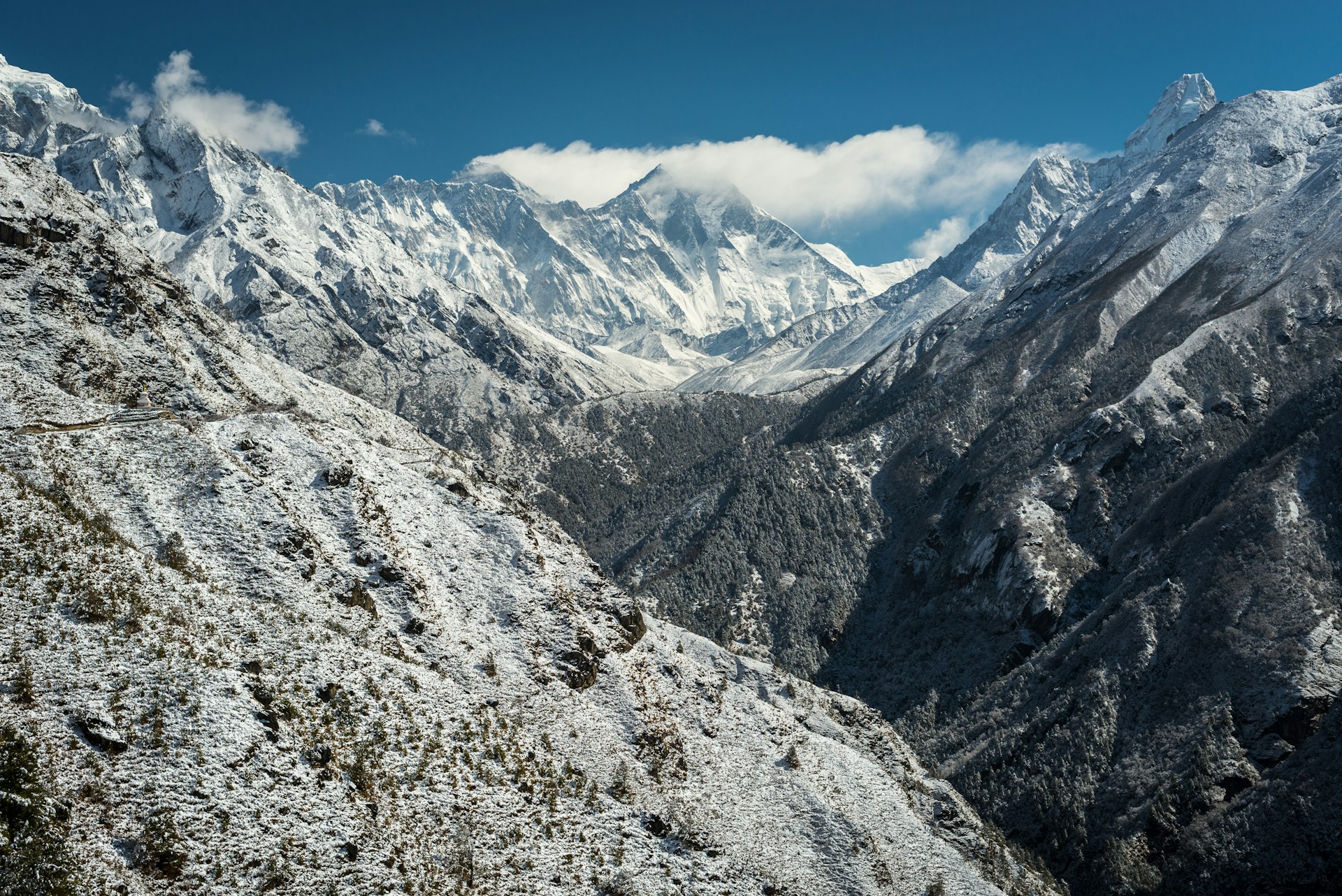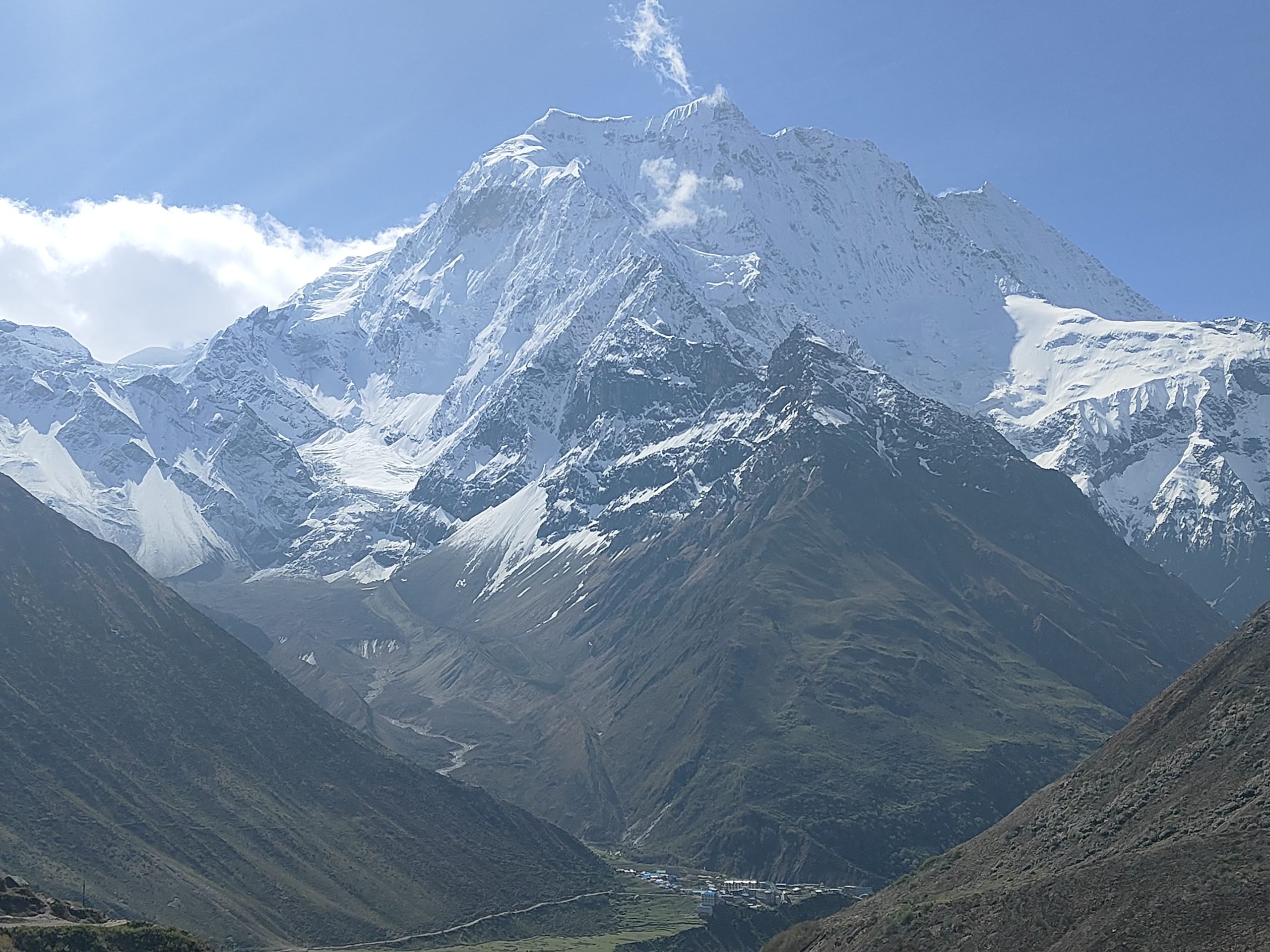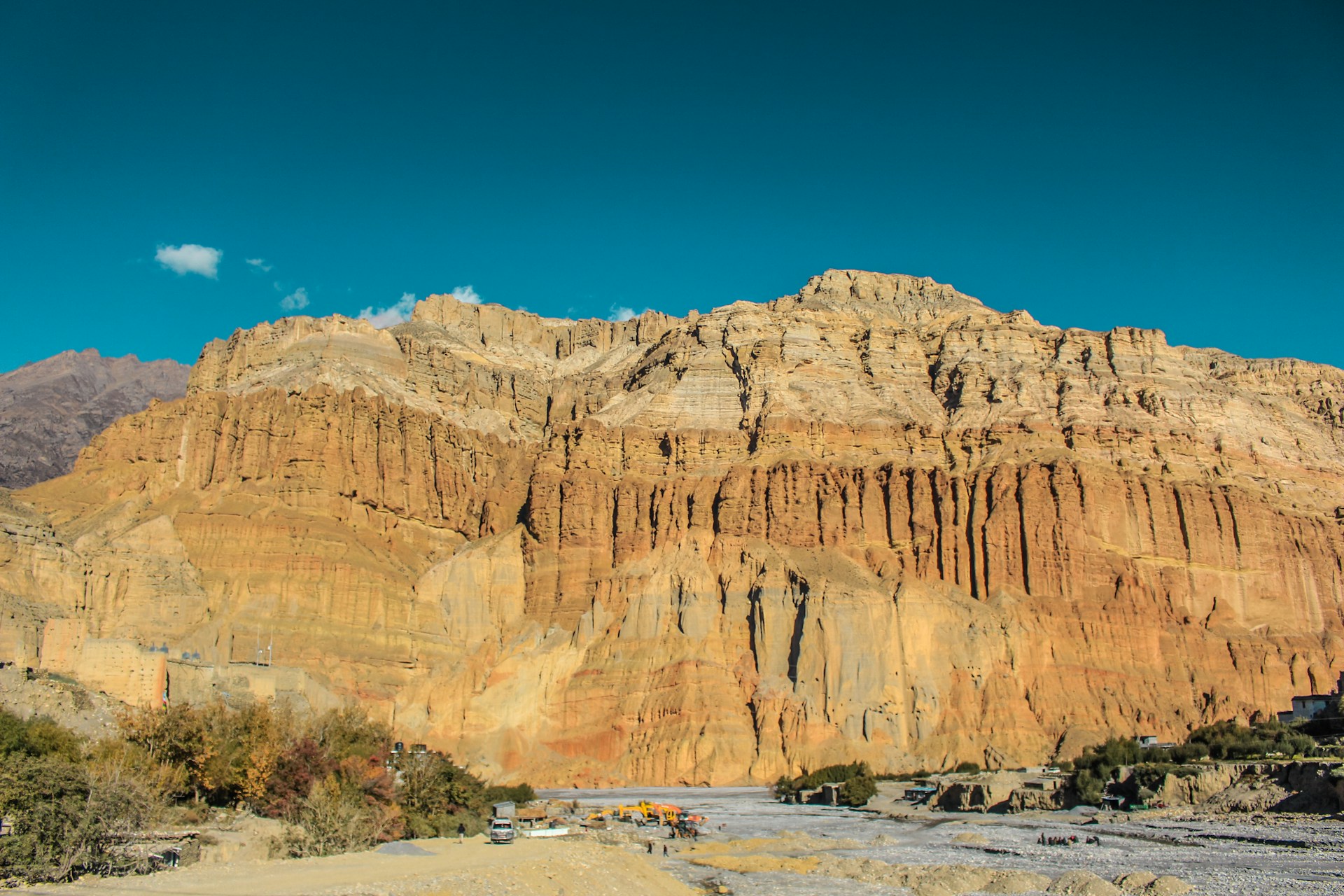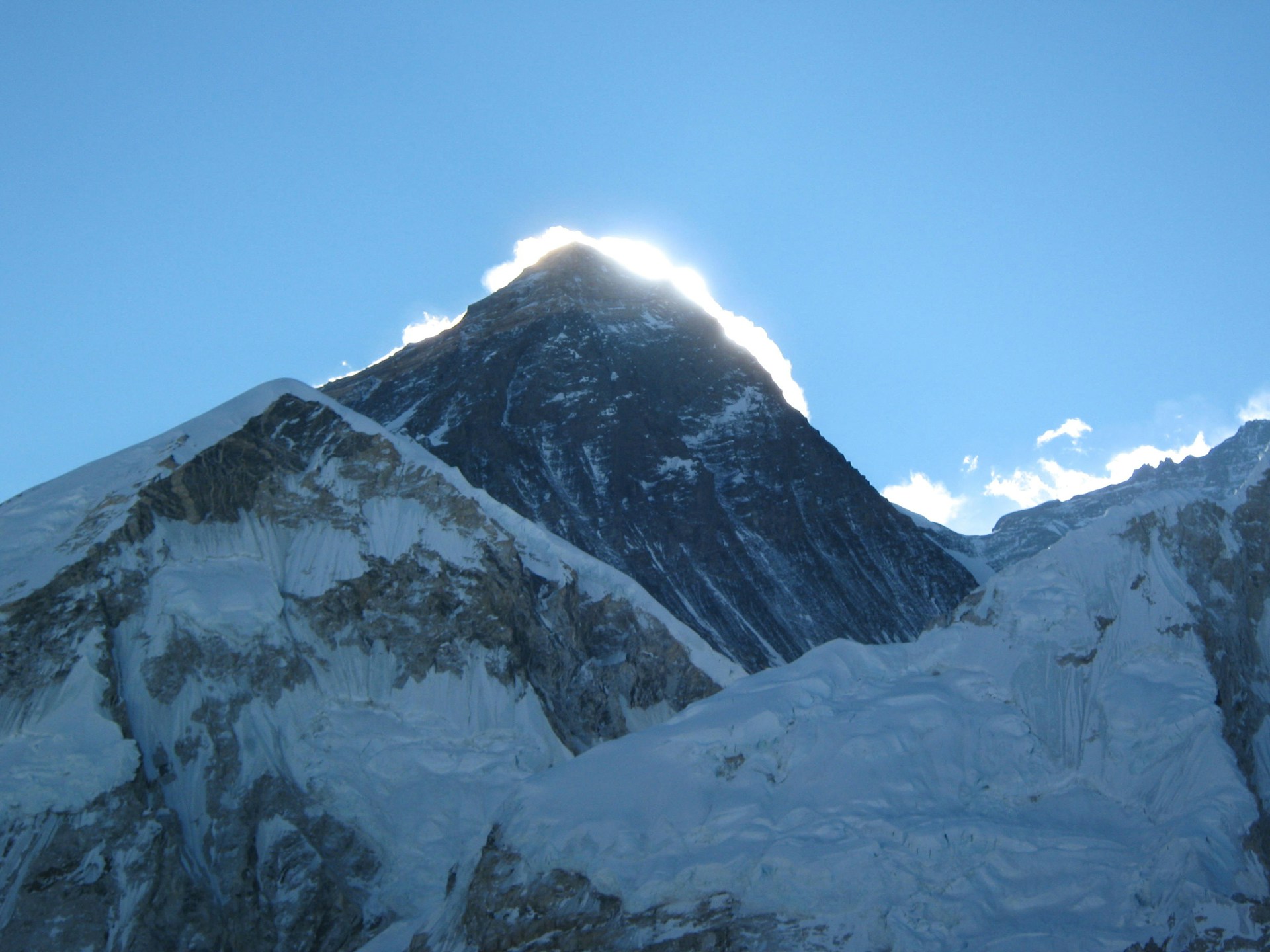Everest Base Camp Trek | 14 days EBC Trekking for 2024/25 Overview
The Everest Base Camp Trek is an exciting 14-day journey that gives ample time to reach the foot of the highest mountain in the world, Mt. Everest. This trek lies in the Solukhumbu district in Sagarmatha National Park and is very famous among trekkers due to the popularity of Mt. Everest itself.
The highlight of your trek is the breathtaking view of Everest from Kala Patthar, or Black Rock, which is a perfect vantage point to experience the grandeur of the mountain. The highest point on this trek reaches an altitude of 5,545 meters.
While Everest is there to steal the show, other towering peaks such as Mt. Ama Dablam, Mt. Lhotse, Mt. Nuptse, Mt. Lobuche, and Mt. Tawache dominate the landscape, giving extra visual feast.
It also passes by Tengboche Monastery, with its spectacular views of the mountains, and Namche Bazaar, a large alpine town considered generally to be the entrance to Everest. The reasons for this will not go unnoticed in the brightly colored prayer flags, stupas, monasteries, and Mani stones that reflect the spiritual appeal of the region.
The landscape of this trek is just as engrossing-with alpine forests, Sherpa villages, and peeks into the resilient life of the local Sherpas who call this hostile environment home.
Major Attractions of the Everest Base Camp Trek:
Scenic Flight to Lukla
The exciting 35-minute flight from Kathmandu to Lukla starts your journey, with breathtaking aerial views of mountainous terrain and lush landscapes. For many, this flight itself is a highlight of the trip.
Magnificent Views of Mt. Everest and Other Peaks
The Panchboche Trek combines panoramic views of Mt. Everest with several other towering peaks that include Lhotse, Nuptse, Ama Dablam, Makalu, Pumori, among many others. These great views are simply some of the most exciting in the whole world.
Kala Patthar
Kala Patthar, at 5,545 meters, is the highest point on the trek. It provides one of the most stunning, unobstructed views of Everest and the surrounding Himalayan peaks. It’s a highlight for trekkers aiming to get the perfect photo of Everest.
Tengboche Monastery
Situated right at the middle of the Khumbu region, the Tengboche Monastery has to be the most important Buddhist site on this trek. The dramatic mountain scenery surrounds this spiritual place, offering insight into the Sherpa culture while affording breathtaking views of Everest, Lhotse, and Ama Dablam.
Namche Bazaar
Namche Bazaar is a bustling Sherpa town situated at 3,440 meters and is considered the “Gateway to Everest.” This is a place where one can acclimatize and enjoy the vibrant atmosphere with local shops, cafes, and spectacular views of the surrounding mountains.
Sagarmatha National Park (UNESCO World Heritage Site)
The trek goes through Sagarmatha National Park, which is listed by UNESCO as a World Heritage Site, and houses all types of flora and fauna. The park is rich in natural beauty and cultural aspects, with alpine forests, glaciers, and unique wildlife-like Himalayan tahr and snow leopard.
Sherpa Villages and Culture
During the hike, passing through villages like Dingboche, Pheriche, and Khumjung, you’ll come across Sherpa culture. The warmth and hospitality of the local Sherpa people are a highlight, and you’ll encounter traditional Tibetan-style houses, monasteries, and prayer wheels along the way.
Buddhist Monasteries and Stupas
Along the route, you’ll visit several important Buddhist monasteries, such as Rongbuk, Dingboche, Thame, and Khumjung. These sacred sites are rich in history and provide spiritual enrichment. You’ll also come across many stupas and Mani stones scattered along the trail.
Himalayan Wildlife and Flora
This trek also offers great views of some unique Himalayan wildlife such as the Himalayan Monal, which happens to be Nepal’s national bird, the musk deer, and the red panda. The landscape is also decorated with rhododendron forests, especially in spring.
Khumbu Icefall and Glacier
The Khumbu Icefall is the most spectacular sight during the trek. This huge, dynamic glacier lies on the south side of Everest. A surreal experience in the heart of the Himalayas, this is a walk amidst snow and glaciers.
Tea Houses and Lodges
teahouses and lodges on the way give lodging facilities for the trekkers. Basic yet warm-simmer lodging would render enough opportunities to the trekkers to unwind and share many experiences with the rest of the hikers. Most teahouses come with good views of mountains.
The Himalayan Landscapes
The entire trek is filled with stunning natural landscapes: rivers, valleys, forests, glaciers, and alpine meadows. Every day on the trail offers a different perspective of the Himalayan wilderness, making the journey unforgettable.
EBC Trek Difficulty and Preparation:
The Everest Base Camp Trek is considered to be an average difficult trek. Even though the trek demands a good level of physical stamina, good fitness levels will permit trekkers to complete it easily. It’s going to be with rugged terrain, trekking up to 6-7 hours each day, steep up and down slopes.
Although this is considered a beginner-friendly trek, fit people start training by doing aerobic exercises such as walking and running prior to the trip. With proper acclimatization, our experience guides help the trekkers hike with less disturbance of altitude and terrain.
Best Time for the Everest Base Camp Trek:
Spring (March – May):
The most popular season, with clear skies, dry weather, and vibrant landscapes. The trails are busiest, and you’ll encounter climbers making their way to Everest summit.
Autumn (September – November):
This season offers mild temperatures, fewer clouds, and stunning panoramic views of the surrounding peaks. It’s also less crowded than spring, making it a favorite for trekkers.
Everest Base Camp Trek Route:
Everest Base Camp Trek Route: The Everest Base Camp trek route starts with a fascinating flight from Kathmandu to Lukla, followed by consecutive treks to Phakding, Namche Bazaar, Tengboche, Dingboche, and Lobuche. From Lobuche, trekkers head towards Everest Base Camp, further up to Kala Patthar via Gorakshep.
Should flying into Lukla not sound to one’s cup of tea, then the area is accessible by road, which again is an exciting route in its way. You will drive through mountain villages, cross glaciers, and encounter unique Tibetan and Sherpa cultures. On the way, you can see some of the highest peaks in the world, such as Everest, Ama Dablam, Lhotse, and Nuptse.
It can also be started from Jiri on the way to Everest Base Camp via the classic route for others.
Summary of Itinerary:
Day 1: Arrival in Kathmandu
Our airport representative will greet you at the airport and safely transfer you to the hotel upon your arrival. This airport is located 8 km southwest of Thamel, where the hotel is located. You will reach the hotel after a drive of about 20-30 minutes depending on traffic.
Upon arrival in the morning or by noon, we take you for a stroll around a couple of tourist places around Thamel after you freshen up at the hotel.
We then take you for the welcome dinner and brief you about the trek in the evening.
Day 2: Fly to Lukla & Trek to Phakding
The flight to Lukla usually takes off during morning time, and it is also better to fly in the morning in terms of safety, since we will be flying above rocky cliffs and a zigzag landscape. We prefer and suggest morning flights since it skips the harsh wind and the weather is more-clear.
After flying 35 minutes to reach Lukla, we will have a fresh and hygienic breakfast in Lukla and get ready for the trip. Then we start our hike toward our dream destination. Our next stop will be Phakding. The route is plain mostly, but a couple of gradual downhill hikes are included.
It’s a great hike as we get acclimatized on the way. Preparation for further hikes during the trek, it goes via a couple of villages- enjoying the mesmerizing view and then finally we’ll reach Phakding.
We will overnight at Phakding. However, if you want to make the route a little shorter for the next day, then you can also hike further to Monjo.
Day 3: Trek to Namche Bazaar
After breakfast, we start our trek to Monjo, Jorsale, Everest National Park entry, and from there go uphill for 4 hours after crossing the Hillary suspension bridge over Dudh Koshi River. On our uphill hike, we will see the first view of Everest on the trek.
You can walk around the narrow alleys of Namche Bazar, chatting with the locals, visit various monasteries and Sherpa villages, and local cafes, and take pictures around this beautiful town.
If you are lucky enough to reach Namche Bazar on a Tuesday, then you get a wonderful opportunity to observe the Haat Bazar-farmers market/weekly market-where farmers and traders sell their products on stalls. This is a very lively market, and here you get a golden opportunity to buy souvenirs to take back home.
Day 4: Acclimatization and exploration around Namche Bazaar
We do include, in most of our packages, 2 days for acclimatization in Namche. However, you have two options for activities this day. The first option is that you can hike up to Syangboche early in the morning for a Sunrise view from where beautiful views of the sunrise peeking through the Himalayas, as well as the landscape and Namche Bazar view from the hilltop, can be seen.
Syangboche hike is 2 hours up and down. After the hike, have breakfast in the yard of the Everest View Hotel with views of Everest, Nuptse, Lhotse, Ama Dablam, Thamserku, Kongde, Kangtega, Kusum Kangaru, and other high Himalayas.
You will later head back to the hotel in Namche for an evening stroll. Namche Bazaar is the very last point of the trek from where one can procure any essential goodies as well as cash via ATMs.
Another option is that if Khumjung is not covered on your itinerary while returning back, you can hike to Khumjung Village on this day. If you are willing to experience a full-day excursion then this will be the best option. This hike takes 4 to 5 hours up and down.
Please do consult with our professional guide in advance, then he will be happy to take you to Khumjung Village. The highlights of this village are monasteries, and the view of the Himalayas seen from here is mesmerizing. In Khumjung, lots of notable infrastructures are contributed to the community by Sir Edmund Hillary.
After this, you can come back to the hotel in Namche and take an evening stroll.
Note: If you guys don’t wish to stay two nights in Namche then you can stay another night in Khumjung but you need to inform us earlier so that we may tailor-make your trip accordingly.
Day 5: Trek to Tengboche
After breakfast, you will start your journey towards Tengboche, which is an attractive Khumjung village, having the largest gompa (gumba). The breathtaking trail follows in continues from above Dudh Kosi. From here onwards, the stunning view of mountains like Mt Everest, Nuptse, Ama Dablam, and Lhotse in the Khumbu region can be observed.
You would then trek through settlements that reflect the culture of the place and small tea shops that look as if it is a place on the pages of fables. You will then proceed towards Phunki Tenga for lunch.
After lunch and rest, you head toward steep climb of 3 hours to Tengboche. Further climbing, at last you reach at Tengboche where you can see the gorgeous views of the Himalayas.
Day 6: Trek to Dingboche
In the beautiful scenic views of the surrounding mountains starts your trek towards Dingboche. On the way you can see the field of Barley, buck wheat and potato.
You can also go to visit the village and take a hot cup of coffee or local tea.
Day 7: Trek to Lobuche
In the day you will cross the green wide valley overlooked by the extra ordinary peak -Cholatse and Tawache. Upon turning your route to the right you’ll will go upwards through steep way so as to reach to the bottom of Khumbu Glacier.
The quaint teahouse at Duglha will be an amazing stop for lunch. Later, continue on a zigzag trail that will take you through the glacier’s terminal moraine.
When we reach the top of our climb, you will find many stone cairns which have been constructed as memorials to the brave Sherpas who died while climbing to conquer the mighty Mt Everest.
The path then goes up along the glacier and you can see numerous little houses at Lobuche. The whole trail will be covered in 4-5 hours.
Day 8: Trek to Everest Base Camp via Gorakshep
Finally, the most waited day for Everest Base Camp Trekking. Today, the hiking hours are a bit longer compared to previous days, i.e., 7 hours but it is worth it. You make it to the EBC via Gorakshep.
Gorakshep – the original Everest Base Camp at an altitude of 5180 meters. The trail has a rocky pathway with a breathtaking view of the snow peaks, glaciers, and icebergs, finally reaching to the Base Camp – Everest.
The extra advantage in your journey to the Base Camp is the extraordinary and incredible view. Now, after catching these moments here, you will trek back to Gorakshep to spend the night at a trekking lodge.
Day 9: Trek to Kala Patthar and Return to Pheriche
Today, early morning you start your trek to Kala Patthar for the magnificent view of sunrise of the mountains. You get to see the spectacular panoramic view of Mt. Everest, Pumori, Khumbutse, Nuptse, Lhotse, Lingtren, etc. The trek duration will be about 6 hours and you reach Pheriche to spend the night at a guest house.
Day 10: Trek back to Tengboche
Your trek starts from Pheriche and ends at Tengboche. You will go through the lush green forest, beautiful rivers, uniquely built monasteries, and nonetheless, the background view of Mt. Ama Dablam.
It’s another 4-5 hours or more on the return trek for the day. Have amazing views on your trail through the alpine valley. You will cross the Khumbu Khola and ascend in a steep trail to the top of a small ridge where you can enjoy the beautiful views of Kangtega, Amadablam, and Imja Valley.
You will gradually pass through an enchanted forest of rhododendron, juniper as well as fir and then gradually climb up the forest to reach Tengboche. During the spring season, you can very well feel the beauty of the magical rhododendron flowers. You will stay overnight at a guest house in Tengboche.
Day 11: Trek to Namche Bazaar
Today, you commence your trip towards Dudh Kosi, cross the bridge, and then move through the pine trees to reach Thasinga. However, you will get a glimpse of the Thamserku and Kangtega. Next,The trail will be above the valley and move through nature’s beauty Sanasa. At Kyangjuma, you will eventually reach Namche from Tengboche.
Day 12: Trek to Lukla
On your last day of the trek, your way back to Lukla will take you through a steep rocky trail in the terrain and across several suspension bridges over the Dudh Kosi River. The bridges serve as a pass-through for beautiful rhododendron and pine forest, dreamlike Sherpa villages, and finally take you on the trails to arrive at Lukla. The entire trail stretches over 6-7 hours by walk.
The place looks even more beautiful as you are carrying back lots of reviving memories. Once you reach Lukla, you will stay overnight at a guest house.
Day 13: Fly back to Kathmandu
You will fly back to Kathmandu leaving the Solukhumbu district. It takes approximately 30 minutes. We Himalayan trekkers’ team would be very delighted to assist you with your achievement of reaching the Everest Base Camp.
We very much hope you had a heart-touching time with us here in Nepal. After a short break, spend it in a hotel, go sightseeing at some UNESCO-listed heritage sites, and in the evening a farewell dinner is organized by us where you can have authentic Nepalese food in a popular Nepali restaurant.
Day 14: Departure from Kathmandu
Morning/After breakfast according to your flight schedule checkout from the hotel and depart for the Airport with Roam Himalayan Representative, seeking your words on us and waiting for you for next leisure/vacation in Nepal, Bhutan Tibet, and India for safe journey onward to your destination.
Includes:
- All ground transfers in a private vehicle including airport pickup and dropoff
- Twin/Double sharing 3* Standard Category accommodations in Kathmandu
- Daily breakfast at Hotel in Kathmandu
- Twin/Double Sharing lodge/Tea House/Guest house Accommodations during the trek as per itinerary
- Meals – Breakfast, Lunches & Dinner during the trek
- Domestic (Kathmandu – Lukla – Kathmandu) airfare and taxes
- An experienced English-speaking guide & required porters as per group size
- All wages, allowances, insurance, medical, and equipment for supporting crew.
- Sagarmatha (Everest) National Park Fees
- Trekkers’ Information Management System fees & Local Province (Municipality/Village) Fees (All Permits)
- Welcome or Farewell Dinner in an Authentic Nepali restaurant
- Government taxes
Excludes:
- Nepal Entry Visa Fees (Visa Can be obtained Upon Arrival)
- International Airfare & Departure Taxes
- Excess baggage (cargo) charges
- Meals (Lunch & Dinner) in the city
- Personal expenses such as phone calls, laundry, bar bills, battery recharge, extra porters, bottle or boiled water, hot shower, etc.
- Tips for guides/drivers/porters
- Any extra cost arising from bad weather, unfavorable circumstances (road blockage, landslide, flight delay, etc.)
- Travel Insurance
Accommodation:
Our package provides 3* standard category accommodation with breakfasts on a twin/double sharing basis in Kathmandu. The accommodations in Kathmandu can be changed based on the availability, interest, requirements, and prior request of the travelers. However, the prices will be adjusted accordingly as well.
Teahouse and Lodge Accommodation: Though the services are not as of the Kathmandu accommodation standards, during the trekking journeys we provide the best available neat, clean, and hygienic teahouse and lodge accommodations that have an attached washroom with a hot shower facility. It’s all on twin-sharing or double-sharing basis.
Some of the popular treks also boast of accommodations no less than the amenities you get from a star-tagged hotel where some good cafes and bakeries can also be found.
Single Supplementary:
- This package is based on a twin-sharing basis, and if the trekkers prefer a single supplementary bedroom for the entire trip in Kathmandu and during the trek, then it is available with extra cost as per the package and requirement.
- This package is designed on a sharing basis, with two travelers sharing a porter, and for any extra luggage or other personal reasons that may require a personal porter, we can provide the service, albeit at an extra cost to you.
Note: A professional guide will lead the group however small or large the group size is, but we also add an assistant guide according to the group size and in case of necessity.
Meals During the entire Trip to EBC
Meals in Kathmandu/Cities
Accommodation included in the package includes breakfast. While for lunch and dinner, and drinks the trekkers have casual choices because they may want to taste most of the cuisines or like to prefer to restaurants/ cafes/ pubs on their discretion while staying in the cities, therefore we avoid inclusions.
During the city tours, our guide or drivers will suggest to you the places to stop by for lunch and dinner as per your interest if needed.
Meals during the trek to Everest Base Camp
Inclusive are all the three main meals such as Breakfast, Lunch & Dinner during the trek. However, food menu and services will be different at various points in the route and altitude. Still, most of the places provide authentic Nepali and Tibetan menu. Besides this, most of the trekking trails have Indian, continental and Western menus. We follow Alakat system at most of the places. So, trekkers can choose meal items from Menu.
Moreover, we provide a welcome or farewell dinner in Kathmandu for our guests.
Note: In the Everest region, a couple of places such as Lukla, and Namche have a wide range of accommodations ranging from basic teahouses to comfortable lodges/hotels, and their prices differ from budget to high cost. Lots of cafes, restaurants, bakeries, and bars are also available here. Thus, interested travelers can upgrade the services in available places at additional costs by informing us in advance.
Permits For Everest Base Camp Trek:
On this trek, you have to pass through Sagarmatha National Park. This National Park is enlisted in the UNESCO World Heritage site and the government charges a little fee to the trekkers to safeguard the natural surroundings of the Everest region.
Sagarmatha National Park is one among the several national parks in Nepal that requires an admission permit to enter. In relation to other costs of the region, the rate is not that exorbitant. The amount will be collected, and money is to be invested in the further development of the region. So, the two permits that are required for the Trekking to Everest Base Camp are-
- Khumbu Rural Municipality Permit
- Sagarmatha National Park Entry Permit
This is just brief information about the permit for you. With us, you do not need to worry about these processes since we will arrange them for you.
Suggestive packing for the EBC Trekking:
Pack items that would keep you dry and warm in bad weather conditions. Generally, layering clothing is the ultimate way to manage comfort during any trek. Have a combination of lightweight and midweight fleeces and thermals and waterproof jackets, pants, hats, scarves, sunglasses, and gloves while packing.
These clothes should be such that they can be easily changed according to the conditions. Also, do not forget to pack trekking poles and extra socks. Also, do not forget to carry a headlamp/flashlight along with extra batteries, energy bars/snacks, toiletries, medications, water purification tablets, and a first-aid kit. You can check our complete EBC guide in the blog section for more suggestions.
Information on the medical facilities available along the trek:
EBC Treks Nepal provides medical facilities and tour guides with basic first aid knowledge. In case of a medical Emergency, evacuation via helicopter service is possible. However, trekkers must do insurance for accessing the service.
Moreover, there are a couple of healthcare clinics and hospitals during the EBC Trekking. These centers will have basic supplies such as antibiotics and vitamin supplements. In case of serious health emergencies, we will arrange an evacuation to better-equipped facilities in Kathmandu or Pokhara for you.
Final Say:
Everest Base Camp Trek is a lifetime of travel memory for anyone. From the breathtaking views of the Himalayan peaks to the thrilling adventure at high altitudes, the trekkers get to see a new dimension and get connected with nature as they fulfill their dream of Mountain adventure. Especially with the proper preparation, determination, and proper guidance you can make the EBC trek worth doing.
We, Roam Himalayan Adventure, are always committed to our clients and give our best. We cordially invite you to join us on this unforgettable journey to the epicenter of the highest mountain range in the world. Whether you are a seasoned adventurer or just looking for your first outdoor adventure, we are always here to help you.




admin
October 28, 2024We’ll journey to the lush rainforests of Costa Rica, a land of unparalleled biodiversity and natural splendor. Here, hidden within the emerald green canopy